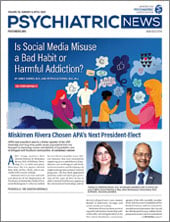Throughout their careers of treating many patients, psychiatrists will encounter some patients who may need to be discharged from care. There may be hesitancy to terminate the patient care relationship for fear of being accused of abandonment.
Abandonment of duty is defined as the unilateral termination of a physician-patient relationship. It occurs when a physician terminates a patient’s care without giving notice and without the patient’s having the opportunity to seek alternative medical care. In such cases, the physician may be held liable for patient abandonment.
Ending treatment should be done carefully to avoid any risk to the patient’s safety. This is especially important when treatment has reached a breaking point or the therapeutic relationship is strained. The physician must ensure the patient is stable and not experiencing a crisis prior to termination.
Some factors involved in the termination of the doctor-patient relationship are the following:
•
The patient no longer requires treatment or treatment is no longer beneficial.
•
The patient and/or family disagree with the treatment plan.
•
Treatment falls outside the physician’s scope or area of expertise.
•
The patient does not adhere to the treatment plan.
•
The patient frequently misses or cancels appointments.
•
The patient does not pay for services.
•
The patient relocates to a state where the physician is not licensed to practice.
•
The physician closes his or her office, retires, or experiences another type of transition or departure.
The situations below provide examples of when termination may happen immediately. In such cases, a traditional notification period is not required.
•
Threats made by the patient, family, or decision-maker to the safety of the physician or staff.
•
Inappropriate conduct by patient (behavior/sexual misconduct).
•
Criminal conduct implicating the practice (drug diversion, destruction of property).
•
Patient termination of care.
If you need to terminate a patient or a patient terminates treatment, here is some guidance on how to proceed. Document the key elements of the decision to discharge the patient and the next steps to be taken in the patient’s medical record. Also document conversations about discharge with the patient and other providers involved in the patient’s care. Capture the patient’s understanding of the termination and other objective and relevant details.
Every attempt should be made to resolve issues prior to discharge. Be aware of statutory requirements for patient termination. Most states require that a written notification of at least 30 days be sent by both regular and certified mail with a return receipt or secure email portal with read receipt. If appropriate, include the reason why you are no longer able to continue to provide treatment, along with the effective date of termination, referrals, emergency resources, release of information request form, and prescription information. In addition to providing the patient with a list of at least three referrals, including a mental health agency, it is important to provide details for crisis centers and emergency service provisions. Avoid situations in which the patient attempts to negotiate to stay under your care.
Here are other risk management measures to reduce your exposure:
•
Document the record to reflect the clinical assessments and impacts to the treatment plan that led to termination.
•
Follow state medical board licensing regulations.
•
Provide the patient with written notification per state regulations.
•
When appropriate, provide a prescription for medication up to the termination date with no refills.
•
Consult with a risk management professional or legal counsel. ■
This information is provided as a risk management resource for Allied World policyholders and should not be construed as legal or clinical advice. This material may not be reproduced or distributed without the express, written permission of Allied World Assurance Company Holdings, Ltd, a Fairfax company (“Allied World”). Risk management services are provided by or arranged through AWAC Services Company, a member company of Allied World. © 2024 Allied World Assurance Company Holdings, Ltd. All Rights Reserved.

